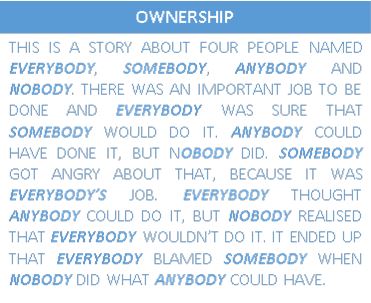Each school ends up with a detailed table that shows the energy consumption and environmental impact of the lighting systems, ceiling fans etc. used in the school.
Once the numbers are calculated the children use them to get an understanding of the cost of classroom lights and fans on an hourly, daily, weekly and per term basis.
Lesson
Even more important, they also learn the importance of turning things off when not needed and the impact that decision has on the cost of running their individual classrooms.
Simple math it may be, but it is teaching a very important lesson to the children, namely, lots of small individual savings, while seemingly insignificant on their own, quickly add up to much larger overall savings when cumulated together.

The school has over 60 different rooms, including classrooms, and by the time I finished the audit I was amazed that every single classroom I visited had all the lights turned off and only two classrooms had gone out and left their fans running.
What I also found, in complete contrast, was that the lighting in almost all the common areas of the school: hallways, bathrooms, stairwells etc. was turned on.
After talking to one of the staff I found out that in anticipation of the audit the school had begun practising their energy-saving skills about two weeks prior to my arrival and the children were obviously embracing their new-found responsibilities for saving energy with as much enthusiasm as the efforts they were making that afternoon on the playing field.
Successful
The contrast between the classrooms and the common areas of the school is in no way meant as a criticism, on the contrary, it illustrates a very important lesson about one of the primary requirements of any successful project – 'ownership'.
If you want something to be done or a project to succeed it is essential to build in three basic requirements:
- A clearly defined set of objectives that everyone understands and more importantly everyone agrees to.
- A time frame for the completion of each of the objectives.
- Clearly defined 'ownership' for each task that will achieve the stated objectives.
If the teachers had also assigned the common areas to the children, as they had done with the classrooms, I am certain those lights would also have been turned off that afternoon.
Taking this primary school lesson to a national level, it made me think of the 2011 Bermuda Energy White Paper. In this document the Bermuda government laid out:
- 'A clearly defined set of objectives' related to the growth of Renewable Energies and the associated reductions in our dependence on fossil fuels and carbon emissions. (Step 1)
- Each objective was then given a 'defined time frame for completion'. (Step 2)
That's the good news — now the bad news. Three years later and it is clear to anyone with a basic understanding of critical path analysis that we are not going to achieve the objectives we set.
Even worse, we have made so little progress on some that we are in danger of going backwards.
Our reason for failure is simple and clearly illustrated by our primary school students — if you want to make progress in achieving objectives in a defined time frame you must complete 'Step 3' — assign 'ownership for the task', and know who will take responsibility for its completion.
In the case of the 2011 Bermuda Energy White Paper and the carefully defined long term objectives contained therein.
They have been lost in a 'cross ministerial wasteland' that definitely belonged to 'Everybody' and was constantly the direct responsibility of 'Somebody' and as a result, progress has always been available for review by 'Anybody' who has over the years constantly updated 'Nobody'!
Nick Duffy is the divisional manager at Bermuda Alternate Energy. Comments and suggestions may be sent to This email address is being protected from spambots. You need JavaScript enabled to view it.


